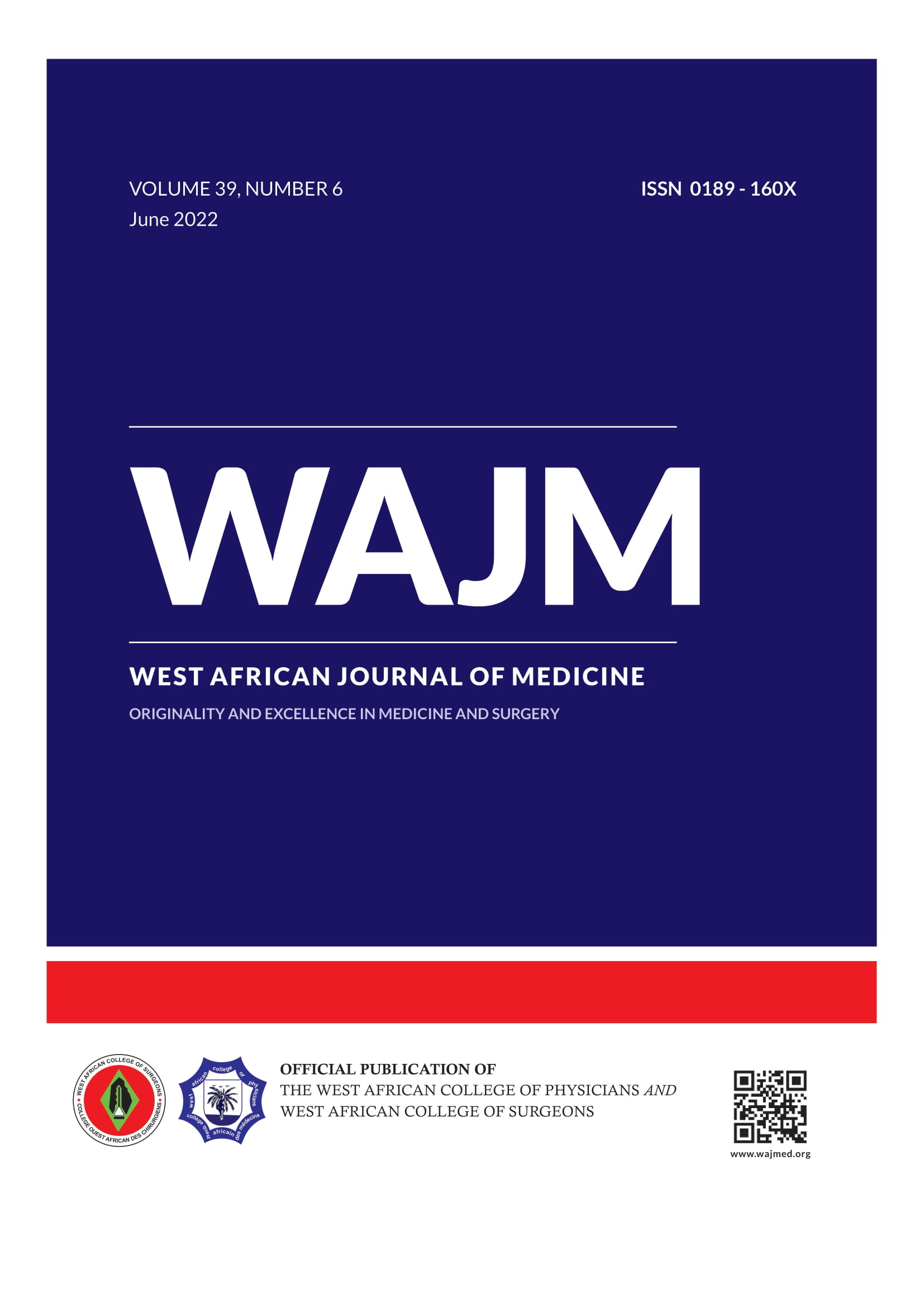ORIGINAL: Clinical Presentation and Intensity of Infection with Intestinal Helminths among School Children in Ile-Ife, Osun State, Nigeria
West Afr J Med . 2022 Jun 24;39(6):568-572.
Keywords:
Helminths; Intensity; School children; Symptoms.Abstract
Background: Intestinal helminthiases are public health problems of children in developing countries of the world and account for significant morbidity as it results in stunted growth, intestinal obstruction, anaemia, cognitive impairment, acute pancreatitis, acute cholecystitis and rectal prolapse. This study assessed intestinal helminths, infection intensity and symptoms in primary school children in Ile-Ife.
Methods: It was a cross sectional study. Three hundred and eighty-four pupils randomly selected from six public primary schools in Ife Central Local Government were enrolled for the study. Ethical approval was obtained. Stool samples were collected and processed using the Formol-ether concentration method. Questionnaires were administered to obtain relevant information. Data entry and processing were done using Microsoft excel and IBM SPSS Statistics for windows, version 17. Statistical analysis included frequency, proportion and percentages.
Results: Helminthic parasites were recovered from the stool of the schoolchildren and the overall prevalence of helminthic infection was 24%. Ascaris lumbricoides was the most prevalent (22.1%) with moderate and light intensities of infection, Hookworm (3.4%) with light intensity infection and Hymenolepis nana 0.3%. Symptoms were present in 48.2% of the participants and 31.5% presented with abdominal pain, nausea 22.1%, diarrhoea 21.1%, anorexia 7%. Weight loss, nausea and vomiting were found to be significantly associated with infection with intestinal helminths.
Conclusion: Light to moderate intestinal helminthic infections are still prevalent among school children with weight loss, nausea and vomiting being the most significant symptoms. Continuous studies among school children are needed including those in private schools to better understand the epidemiology of these infections
Authors B O Olopade 1, T O Charles-Eromosele 2, O B Olopade 3

